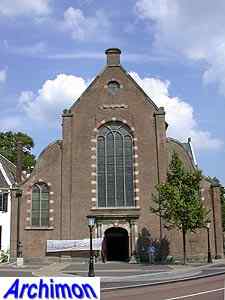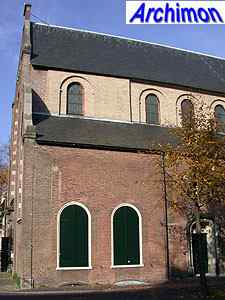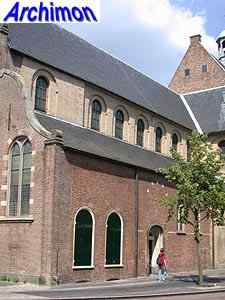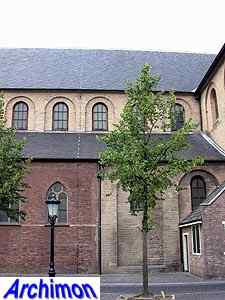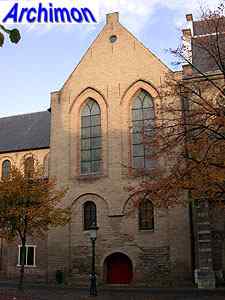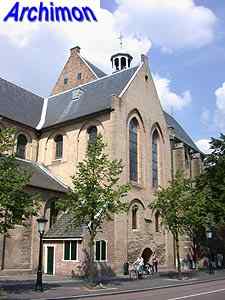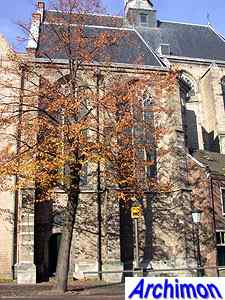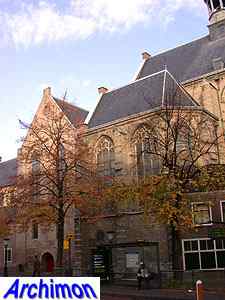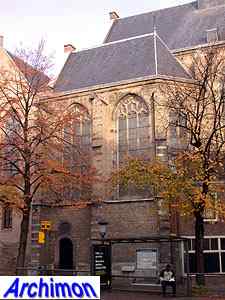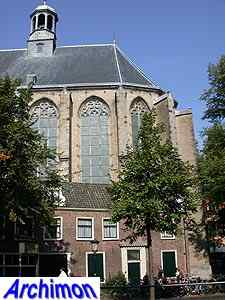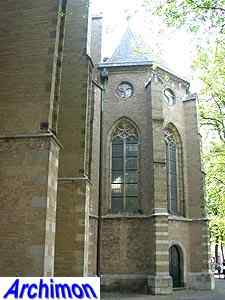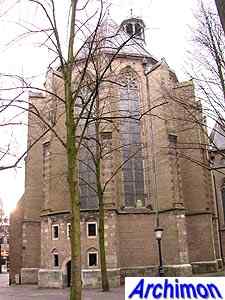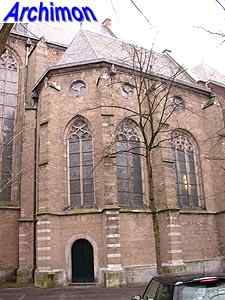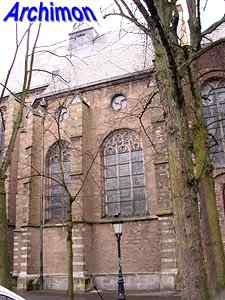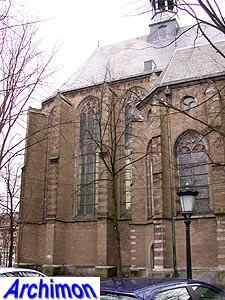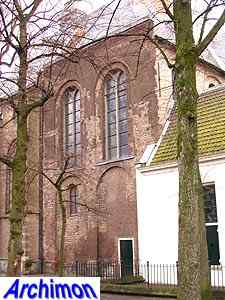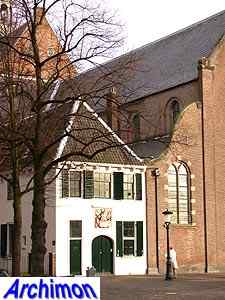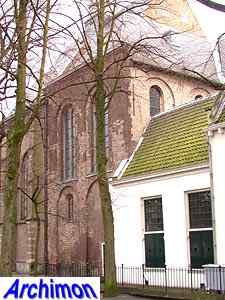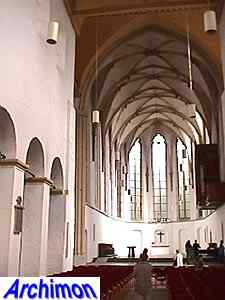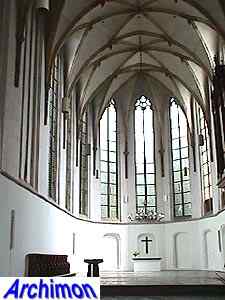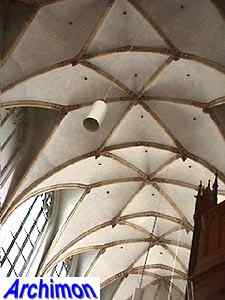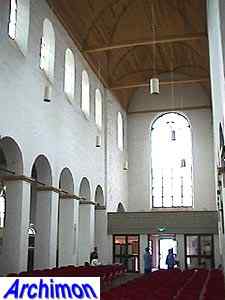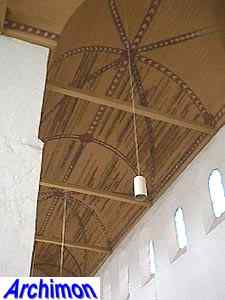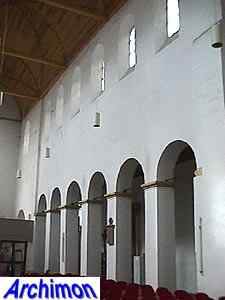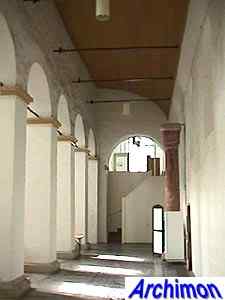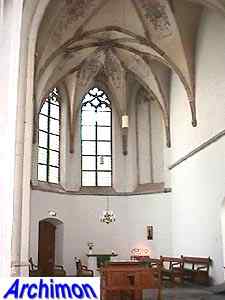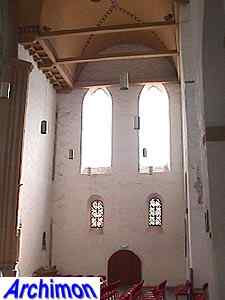
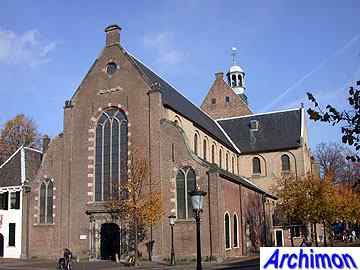 The combination of a facade in Renaissance
style, a Romanesque nave and transept and a Gothic choir immediately
makes it clear that this church has a long history. The St. John's
church was built as the northern end of a cross of churches of
which the first cathedral was the center, and must originally
have been virtually identical to the Pieterskerk
("St. Peter's church") at the east end of the cross.
Like that church, construction of St. John's was started shortly
after 1040. Originally the church had a westwork consisting of
a choir and two towers, one of which collapsed in the 14th century,
while the other was demolished in 1682. At the beginning of the
16th century the choir was replaced by a new Gothic one. In 1580
the church was closed for services and was given a new function
as a library. In 1656 the building became a reformed church,
although the library remained in the church until 1821. After
a tornado had seriously damaged much of the western side of the
church in 1674, the last remaining tower was demolished and a new facade
in Renaissance style was built in 1682, designed by Gijsbert
Theunisz. van Vianen. The wall
of the southern side-aisle was partly renewed in brick early
in the 17th century, and has two pointed windows. The Romanesque
nave and transept were constructed out of tuff, although the
top of the southern transept-arm's gable was renewed in brick
as well after a fire in 1279. At the north side this top is missing.
A small belltower was added
to the top of
the choir in 1681, to compensate the loss of the two
towers. The current one is is a copy from 1976.
The combination of a facade in Renaissance
style, a Romanesque nave and transept and a Gothic choir immediately
makes it clear that this church has a long history. The St. John's
church was built as the northern end of a cross of churches of
which the first cathedral was the center, and must originally
have been virtually identical to the Pieterskerk
("St. Peter's church") at the east end of the cross.
Like that church, construction of St. John's was started shortly
after 1040. Originally the church had a westwork consisting of
a choir and two towers, one of which collapsed in the 14th century,
while the other was demolished in 1682. At the beginning of the
16th century the choir was replaced by a new Gothic one. In 1580
the church was closed for services and was given a new function
as a library. In 1656 the building became a reformed church,
although the library remained in the church until 1821. After
a tornado had seriously damaged much of the western side of the
church in 1674, the last remaining tower was demolished and a new facade
in Renaissance style was built in 1682, designed by Gijsbert
Theunisz. van Vianen. The wall
of the southern side-aisle was partly renewed in brick early
in the 17th century, and has two pointed windows. The Romanesque
nave and transept were constructed out of tuff, although the
top of the southern transept-arm's gable was renewed in brick
as well after a fire in 1279. At the north side this top is missing.
A small belltower was added
to the top of
the choir in 1681, to compensate the loss of the two
towers. The current one is is a copy from 1976.
Unlike St. Peter's church,
the original red sandstone pillars of this church were encased
in the current square pillars in the middle ages. Only a few
of the current pillars are originals. In 1657 half of them were
removed. The old situation was restored in 1977-1981. The nave has a painted
wooden barrel vault which in parts dates from the 13th century.
The painting was an attempt at simulating groined vaults.
